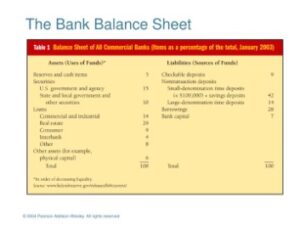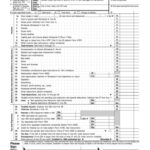
Now that you understand the process of adjusting liabilities through the Payroll Center, you can proceed confidently with making any necessary adjustments to your payroll liabilities in QuickBooks Online. By properly setting up payroll liabilities in QuickBooks Online, you will have a solid foundation for accurate record-keeping and easy adjustments when needed. Once you have completed the setup, you can proceed to the next step of determining the adjustments required. For instance, if an employee’s vacation pay is adjusted retroactively, it would prompt a change in the accrued vacation liability. Similarly, if a new tax law is enacted, it may lead to adjustments in tax calculations and withholdings.

Now, let’s dive into the step-by-step process of adjusting payroll liabilities in QuickBooks Online to ensure your financial records are accurate and up to date. When managing payroll in QuickBooks Online, it is important to ensure that payroll liabilities are accurately recorded. However, there may be instances where adjustments need to be made due to various reasons, such as correcting an error or reflecting changes in employee benefits. Please note that adjusting payroll liabilities should be done with caution, as it can have a direct impact on your financial statements and tax reporting.
Fix the Payroll Liability Balance Report and the Liability Cheque
This article clarifies every step on how to adjust payroll liabilities in QuickBooks and getting it as a credit to payroll tax liabilities. Once the discrepancies are reconciled, the adjusted payroll liabilities and tax amounts can be accurately entered into QuickBooks Online, ensuring that the financial records reflect the updated information. This meticulous process helps maintain accurate and compliant payroll records for the organization. Upon completion, the revised liabilities are accurately entered into QuickBooks, with careful attention to detail to maintain accurate financial reporting and compliance with tax regulations.
Step 1: Create an asset account to track the installment
This recalibration process involves carefully reviewing the previous calculations, identifying any discrepancies or errors, and then correcting these figures to reflect the accurate tax withholdings and liabilities. Once the incorrect amounts are identified, the next step is to zero them out and reconcile the adjusted figures with the company’s financial records. This process involves carefully examining each employee’s pay rate, deductions, benefits, and main secrets of work with loans payable any other relevant information to ensure that their records are updated with the correct information.
- Similarly, if a new tax law is enacted, it may lead to adjustments in tax calculations and withholdings.
- With the ability to make adjustments when needed, you can maintain the financial health of your business and confidently navigate the payroll landscape.
- Adjusting payroll liabilities in QuickBooks Online involves similar steps to the desktop version, with the added convenience of cloud-based accessibility and collaborative functionality for streamlining the adjustment process.
- This option provides a straightforward and user-friendly way to make adjustments quickly and accurately.
This method offers flexibility and precision in making adjustments, ensuring that your financial records accurately reflect the necessary changes. By carefully reviewing your payroll reports, identifying any errors or omissions, considering changes in employee benefits, and accounting for payroll adjustments, you will have a clear understanding of the adjustments required. These adjustments will form the basis of the next step in the process — actually adjusting the payroll liabilities in QuickBooks Online.
Unleashing Young Geniuses: How Lingokids Makes Learning a Blast!
This recalibration process involves meticulously reviewing each payroll tax and liability entry, correcting any discrepancies or errors, and ensuring that the withholding amounts and employer contributions are accurately reflected. Once identified, incorrect amounts are zeroed internal revenue code out through careful adjustments, which involve reconciling the adjusted figures with the company’s financial records. Adjusting payroll liabilities in QuickBooks Online allows you to correct any discrepancies and maintain accurate financial records. This process involves reviewing your payroll liabilities, identifying the adjustments required, making the necessary changes, and verifying the adjustments to ensure they are accurately reflected in your financial reports.
Step 4: Review and Verify Adjustments
After making these individual adjustments, it’s essential to reconcile the payroll records with the amounts owed to avoid any discrepancies. Take control of your payroll liabilities in QuickBooks Online and enjoy the peace of mind that comes with accurate financial record-keeping. With the ability to make adjustments when needed, you can maintain the financial health of your business and confidently navigate the payroll landscape. This reconciliation ensures that the revised liabilities how to account for partial disposals subsidiary to associate are accurately entered into QuickBooks Online, maintaining the integrity of the payroll system and financial compliance. You can adjust more than one liability at a time during one liability adjustment transaction by selecting the payroll items in the payroll item column provided.
Adjusting employer contribution parameters, such as retirement plans or health benefits, should be carefully assessed to align with company policies and employee benefits. QuickBooks Online provides user-friendly options for these adjustments, allowing businesses to customize their payroll settings efficiently. It is critical to consider the implications of these changes, including potential impacts on employee paychecks, tax filings, and financial reporting. So, let’s dive into the specifics of adjusting, reconciling, and entering payroll liabilities in QuickBooks to ensure accurate financial reporting and compliance with accounting standards. Nearly 30% of small business owner’s overpay their taxes every year to the state and federal tax authorities either because of the incorrect tax payment calculation or because of the fear of getting penalties from the IRS. If you are an employer who has overpaid payroll tax liabilities using QuickBooks, then you might want to get the overpaid amount credited as your payroll tax liabilities and get this over payment adjusted in QuickBooks Company file.

